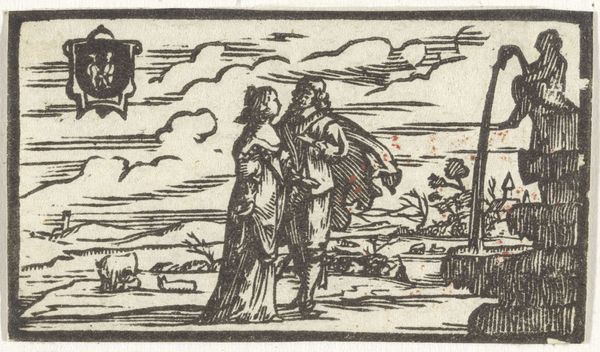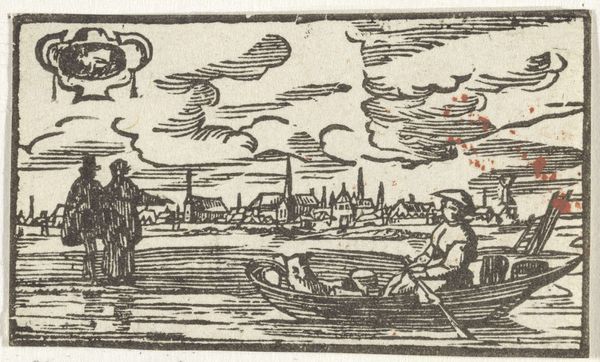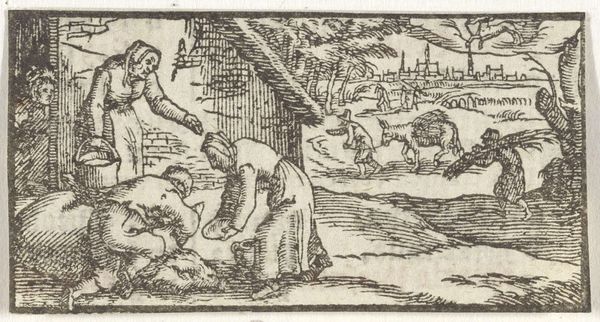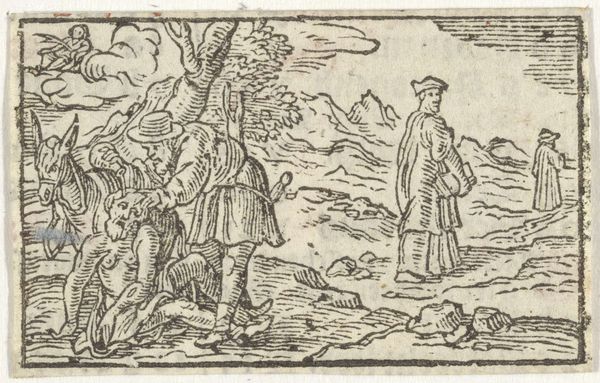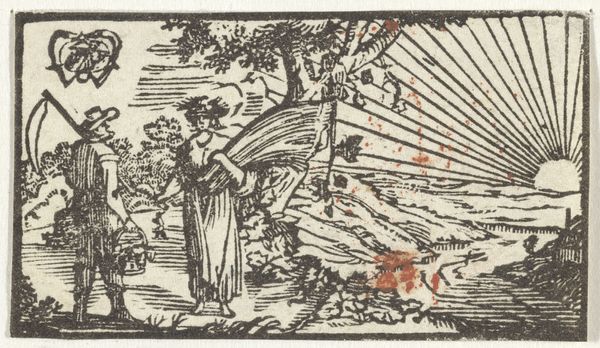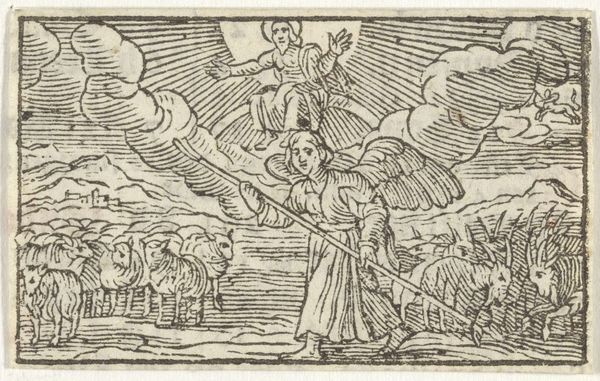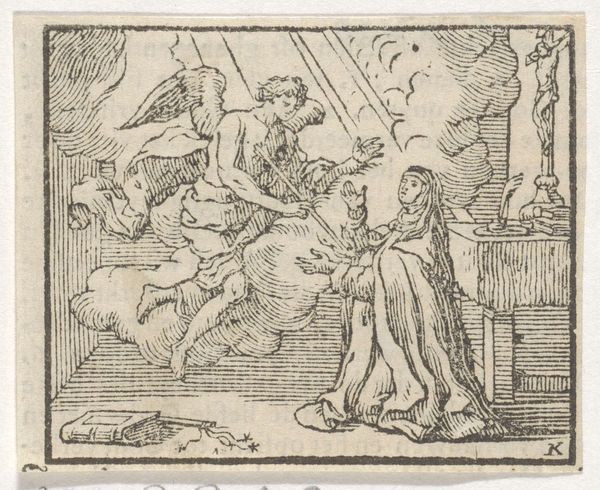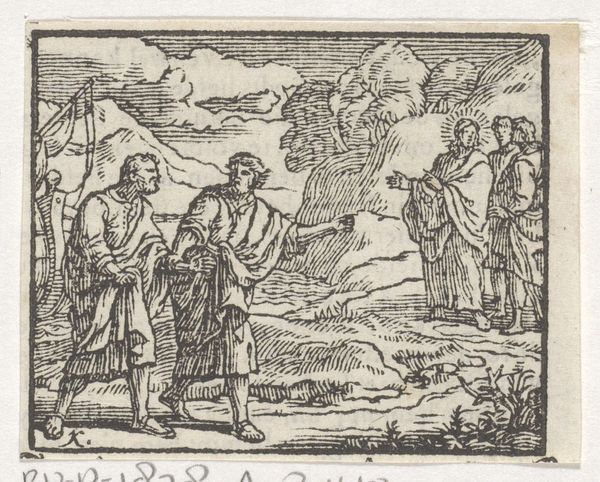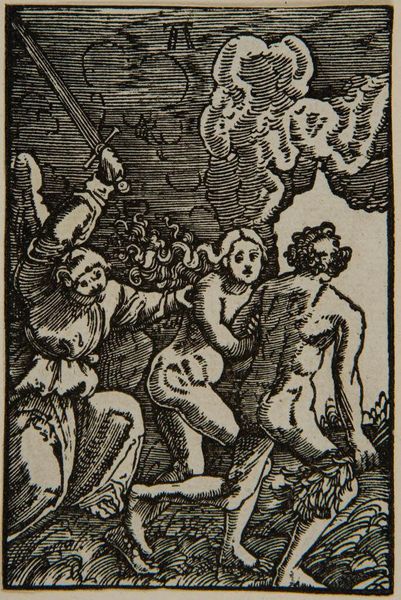
drawing, print, ink, woodcut
#
drawing
#
medieval
# print
#
landscape
#
figuration
#
ink
#
woodcut
Dimensions: height 31 mm, width 55 mm
Copyright: Rijks Museum: Open Domain
Editor: This is a 17th-century woodcut and ink drawing titled "Oktober." The artist is anonymous. The landscape and figuration is stark, contrasting, almost primitive, in its carving technique. What aspects of 17th-century life might have influenced a print like this? Curator: Well, what immediately strikes me is its accessibility. Woodcut prints democratized imagery. This wasn't an oil painting for a wealthy patron, but something potentially available to a broader public. Considering the historical context, the proliferation of printed images in the 17th century played a significant role in disseminating information, shaping public opinion, and even religious or political propaganda. Note the symbol—what could it possibly mean in context of art history and societal structure? Editor: The symbol, right. Given its roughness, maybe it’s meant to resonate more easily with everyday people and the burgeoning middle class, rather than an educated elite? Curator: Precisely. How do you think that connects with its portrayal of a landscape and laborers, and their activities of picking produce from vines? The social structure meant a vast majority was agrarian-dependent. Editor: So, this print offers an idealized view of the peasant experience, maybe promoting a specific ideology about work and nature in relation to the zodiac calendar and agricultural practice? Curator: Exactly! Consider who might be commissioning or buying these prints and how they are being distributed. It's all intertwined: artistic style, subject matter, and the socio-political environment of its creation. What have you learned? Editor: That even a simple woodcut print can reveal much about the social and political dynamics of its time. Curator: Absolutely, seeing art as more than just aesthetics allows us to connect the dots!
Comments
No comments
Be the first to comment and join the conversation on the ultimate creative platform.

